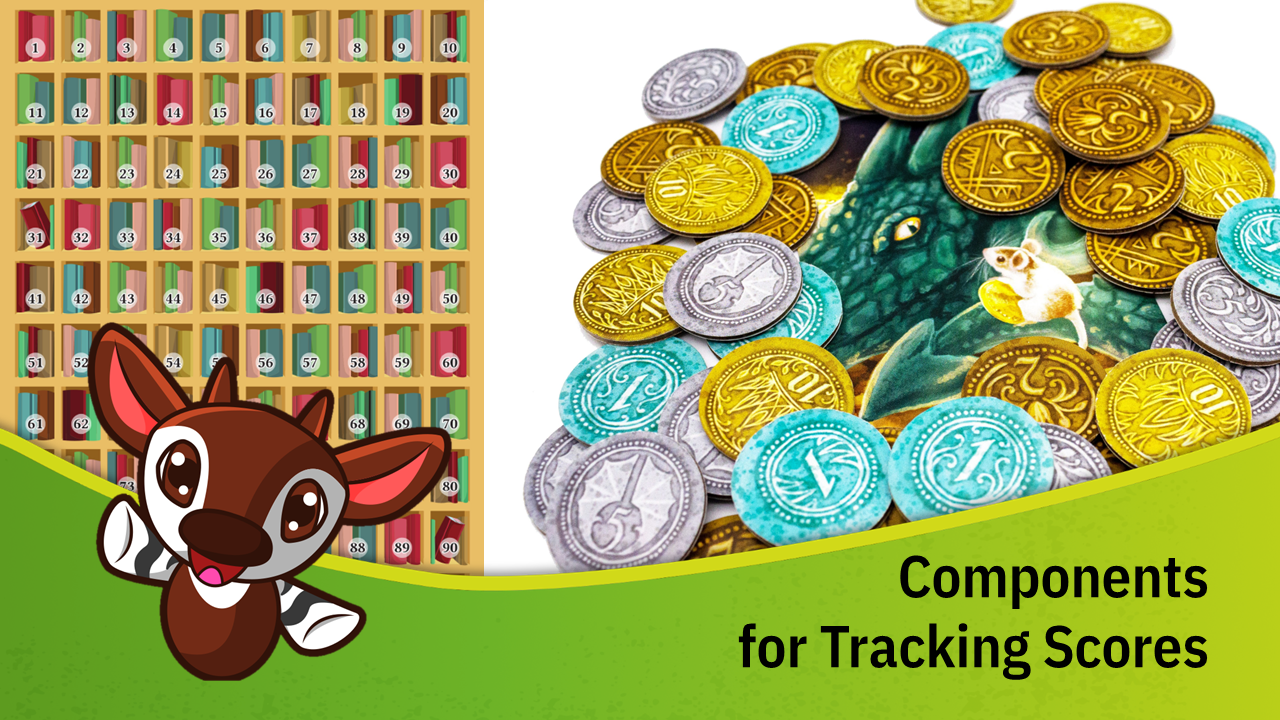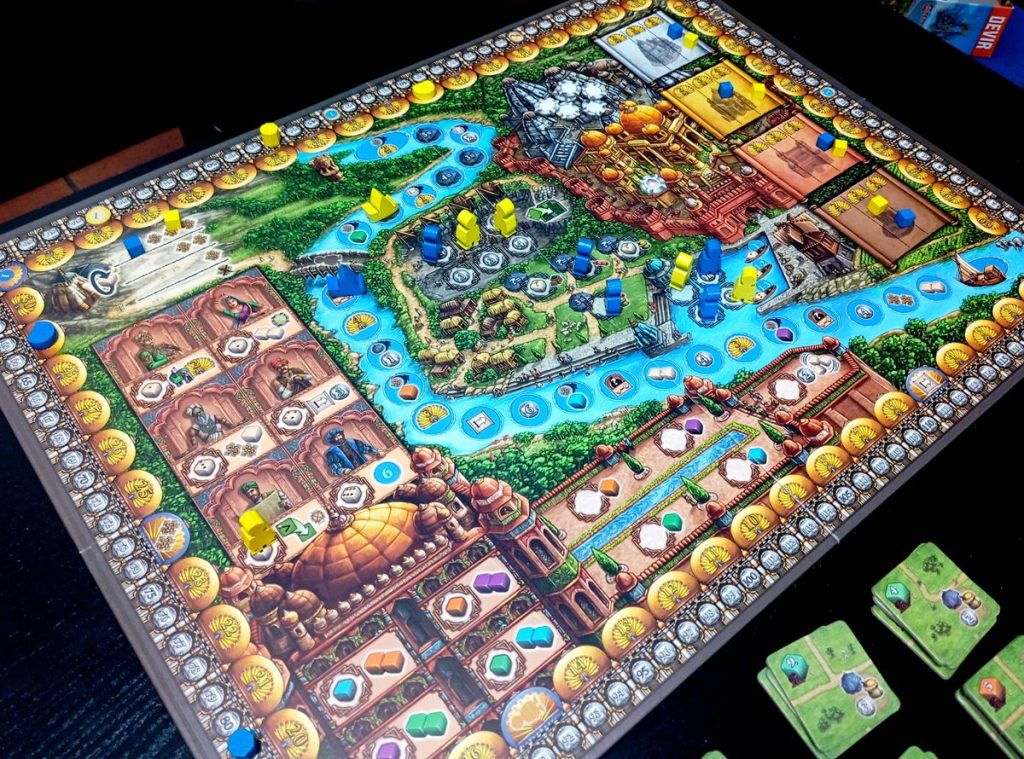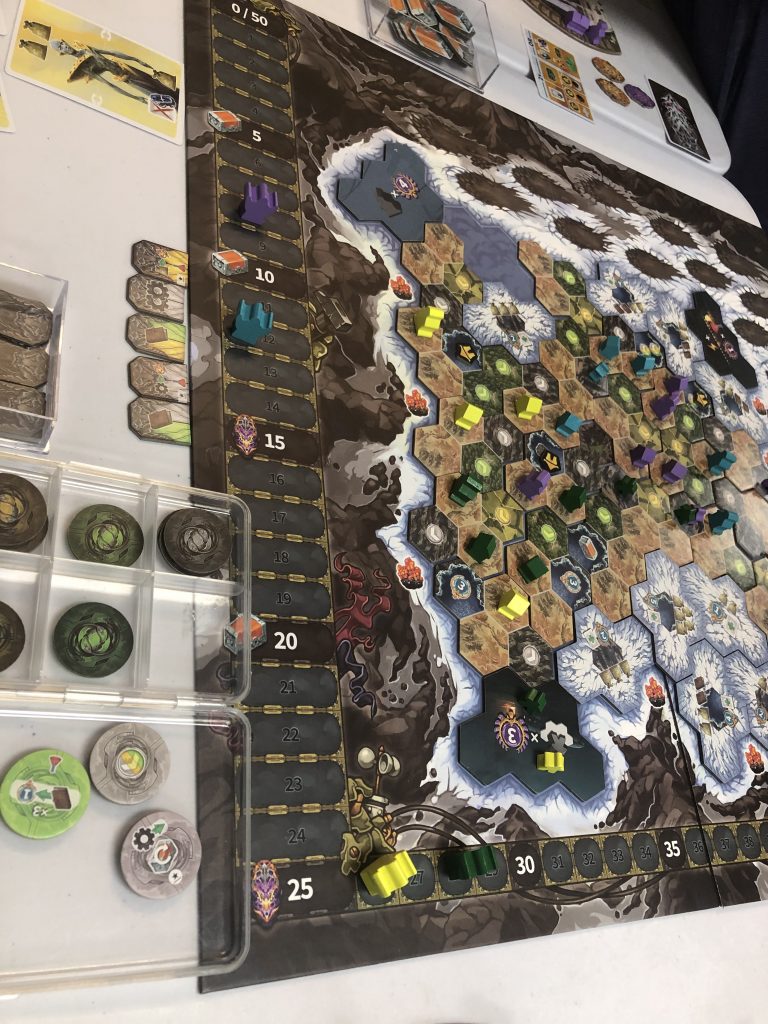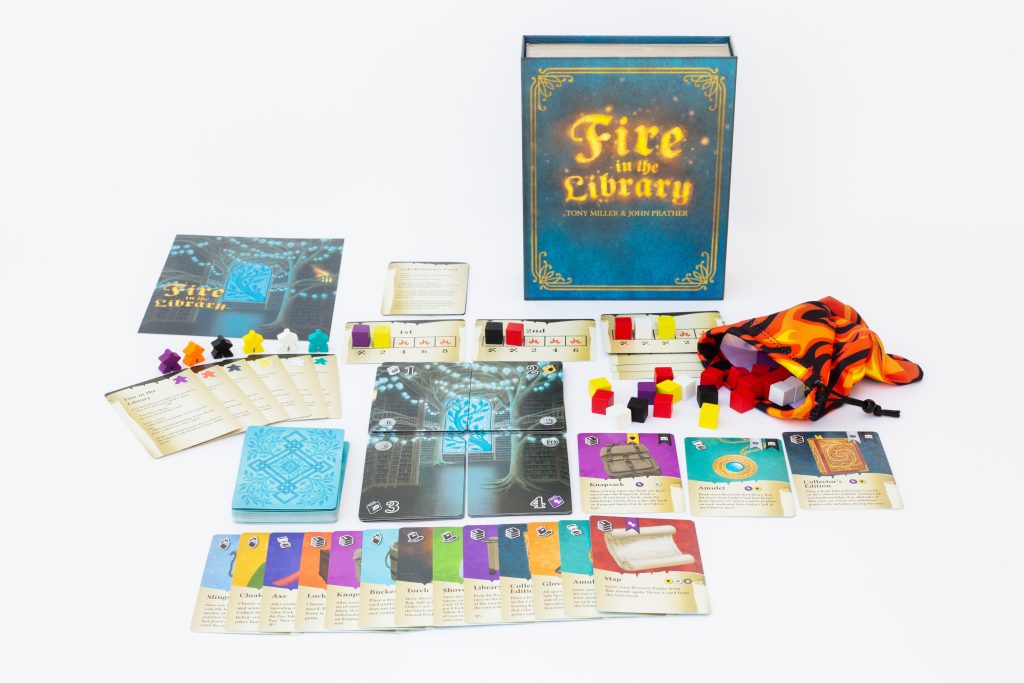
There’s a variety of ways that you can end a game: there can be no tracking of scores and simply a winner; you can tally points until you determine a winner; or there can be factors that determine losing. How you choose to determine the outcome of a game is very important, and will determine how players play the game. How you choose to track scores can also be very important in setting the tone for the game and the cadence of rounds or turns.
No Scoring Components
You don’t have to have scoring components. If you have gameplay elements and there’s a simple way to determine the winner, such as the first person who has no cards in hand, there’s no need to track scoring in any way. This makes things simple and players generally have some idea of who is currently winning, but they don’t have too much insight into this, unless all gameplay knowledge is open.
Scoring Track
A scoring track is another way to track the scores. Usually with this method, players gradually earn points throughout the game. This can be done in two main ways: either adding a score track around a board that is already in the game or adding a board that is only for the score track. Players will all need a way to track scores, so this does mean additional components, as well.
With this method, it’s normally easy to tell who is winning at any given moment and by how much. This can be a more cutthroat method of scoring, as the player with the most points is usually targeted, though the player with the least points might also be targeted with any generosity. There’s no harm in giving the player in last place any benefits, as they’re most likely not in the running for winning unless something drastic happens.
Scoring tracks are good for games that already have a board, as you can simply increase the board size to accommodate the track. If the scoring track is not on a separate board, then the scores are usually prominent and on the players minds, more so than if they are on a separate board that could be on the other side of the table. With a separate board, one player might be relegated to being the score keeper if not all players can reach the board. This is something to keep in mind, as it does take time and effort to be the score keeper and if scores are added throughout the game, if the score keeper is paying more attention to their future plays than the current player scoring, scores could be lost, which would otherwise not happen if the score track is added to the main board. However, separate score boards can keep current scores more out of mind than a score track, which could lead to a slightly more friendly gaming atmosphere.
Score tracking can also increase excitement at the end of game, as going through all the end-game scoring could mean that players swap who is winning while scores are being added. As the differences in scores change, it can give players hope that they just might win the game after all and if the same game had a scorepad this would not happen.
One perk of a scoring track with the scores being so obvious is that there can be triggers for meeting certain thresholds of points. For example, you could trigger the following based on when one or all players pass a certain point value:
- The game or round end
- Specific resources given to a player
- Player abilities or player storage

In Rajas of the Ganges, there are two tracks: one for fame and one for money, and the game end is triggered when one player’s tokens cross each other on the track. This means that a player who gets a lot of one or the other type could win, but a player that goes up on both tracks equally could also win.
In Revive, when players get to a certain amount of points (5, 10, 15, 20, 25), they get a certain benefit immediately in the game. This can cause players to race to get points to get the bonus benefit instead of building up their deck of cards or their player board.


Fire in the Library has a variable turn order which depends on player scores; the player with the fewest points goes first, then the second fewest, etc. With this, it’s very important that everyone know all the current scores as gameplay is dependent on it so there is a score board in the game instead of using another, less obvious scoring method.
Scorepad
Scorepads are usually either a pad of papers that come with the game that have the different scoring conditions on them or they can be a plain sheet of paper that players use to track scores. Some games also include writing utensils, which can come with their own issues, but this is not required.
A printed scorepad can be a nice way to easily show players where their points are coming from. If they glance at it prior to the game, they’ll have some insight into where they should focus their time, but it doesn’t give away much about gameplay. And if the scorepad doesn’t come out of the box until the end of the game, players might not think of scoring as often as they would if there was a score track on the board or a separate scoring board.
If the scorepad is used at the end of each round, players are given insight into how they are doing every so often, and how their gameplay compares to other players. If the scorepad is solely used at the end of the game, players have much less of an idea of who is winning and won’t base in-game decisions on current scores, only on perceived scores (who the player thinks is winning vs actually knowing who is winning). This can create surprises at the end of the game, as a player could have successfully hidden the fact that they were doing well while other players spent their actions preventing another player from winning.
One downside to scorepads is that if there is only one sheet for the entire game, it means that one player is handling the writing and adding of points. This can cause the game to run longer than if the game had a score board where all players could add to their points at the same time or scoring tokens, where all players could count their scores separately.
Instead of having a printed sheet that comes with the game, you can also require that players have a way of tracking scores themselves, either digitally or with paper and pencil. Usually, the cheaper a game is, the more accepted it is to have the players provide the way to track their scores. For instance, if a game is $12, it would be much more acceptable to not provide the scorepad than it would be for a $50 game, especially for games that are only cards, as many players are used to tracking scores when playing games with a regular deck of cards.
Scoring Tokens
Scoring tokens are another option when tracking scores. Usually, there are a few denominations of scoring tokens, so even though you might be able to see how many tokens a player has, you can’t immediately know how their score relates to yours. If they have a bunch of small-valued tokens, it could look like they’re not doing so well, but a few very high tokens that aren’t noticed can swing the scores by a lot.
Again, as with a scorepad, since players don’t know exact scoring, perceived scores will cause players to change their actions, but the actual scores are unknown until the end of the game.
One big benefit of scoring tokens is that players can take them simultaneously and also count them at the end of game at the same time. This means that game time isn’t added to like it would be with a score board or scorepad.

Flotilla uses scoring tokens as the end of game trigger. A certain number of tokens are placed out based on the player count, and once these are all taken, the game end is triggered. There are more scoring tokens for the players that need them in the box so it’s not a complete race to get points, but it’s another interesting way to use the components that are for scoring.
Knowing Your Status
When you know that you’re in last place, that’s not a great feeling. For some players, it might motivate them to play more risky than they otherwise would play. It can also motivate players to give out help to the player with the lowest score if there’s ever a time when they have to share resources or have player interaction. It can also create a target on the player’s back if they have the most points, even if that player isn’t actually winning if you take into account end-game scoring.
However, the shorter the amount of time that you know that you’re losing, the less of an impact that is on the gameplay and how players view the experience. It’s much easier to simply lose the game when the scores are tallied up on a scorepad at the end and to only feel like you’ve lost for minutes before the next game starts, compared to knowing you’re losing the game for two hours.
In Conclusion
While you might know how you want your game to end, what components you use to achieve this can definitely change the friendly-ness, weight, and play time of a game. Do you want players to know who is winning and by how much? A score track might be your best bet. Do you want scores to be a bit unknown until the end of a game? Either scoring tokens or a scorepad might work out better. Want a faster method of scoring? Try going for tokens or a score track instead of a scorepad.
Each component has its positives and negatives. Choosing the right one for your game can definitely change how players play and enjoy the game.